What Does a Blinking Check Engine Light Mean and How Do You Fix It?
What if you see this same warning light on your dashboard but the light is blinking instead of shining solidly? Does this mean a different type of issue or is there a short in the electrics? Let's just clear this up. There may be a short in the electrics but it will not likely be the reason for a blinking check engine light.
In this article we are going to take a look at what the blinking check engine light means, how to diagnose the issues and how to repair the problem. We should say at this point that a solid check engine light is important but if it blinks at you, you better take notice.
Solid Vs. Blinking Check Engine Light
The most common warning light you will see on your dashboard is the check engine light and it will often turn on in conjunction with other warning lights that help to pinpoint the issue. When it comes to the solid check engine light there are a lot of potential causes, some minor and some major.
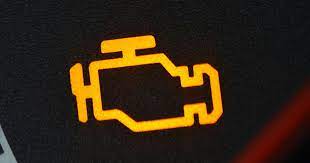
We must first understand that this light comes on to get our attention and warn us that there is an issue with the vehicle. Well if a solid light is meant to get our attention you might now realize that if the light is blinking at us it probably has more to say than normal.
Essentially when the check engine light starts to blink instead of being solidly on then it is trying to tell us something is very very wrong. The only positive thing about seeing this light blink is that it can only mean a few things while a solid light can mean literally hundreds of things.
What Causes a Blinking Check Engine Light?
As mentioned there are a select few problems that can cause your check engine light to start blinking instead of remaining on solidly. Invariably they are severe problems hence the additional visual input attempting to grab your attention.
Misfiring Engine
There are three key elements to the operation of an internal combustion engine: fuel, air and a spark. This is the most basic level of how the system works. Air and fuel mix together in the right proportions and the spark ignites them.
These explosions happen in cylinders within the engine of which there are multiple. The explosion moves a piston in the cylinder which moves the crankshaft which in turn rotates the engine and eventually this motion reaches the drive wheels.
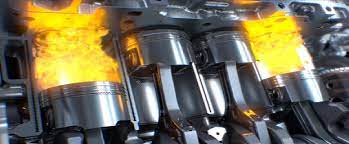
An engine misfire occurs when one of three key elements is at fault and the explosion in the cylinder either fails or it is too large or too small. This can be caused by several issues but it is very serious. This is one of the reasons you might get a blinking check engine light.
Whatever the reason is, a misfiring cylinder in the engine can cause huge damage along with poor fuel economy and overall engine performance. You may audibly hear the engine running roughly or feel vibration from the engine. These are indications of ongoing engine misfires.
If your engine is misfiring you need to get this fixed quickly as the results of continuing to drive can be very costly. A single issue can become multiple problems very quickly with a misfire.
Low Fuel Pressure
This is an issue that can be caused by bad fuel injectors, a broken fuel pump, clogged fuel filter or defective sensors. Whatever the cause, the result is the same: the fuel which is vital to running the engine is not moving as well as it should.
If your fuel pressure is too low you will notice a decrease in acceleration, potential cylinder misfires and you may experience frequent stalling of the engine. You may hear a whining noise when you have low fuel pressure.
With the engine struggling to get the fuel it needs to run it can quickly develop further issues as a result. You should therefore never ignore low fuel pressure warnings such as a blinking check engine light.
Engine Sensor Issues
There are multiple sensors in the engine helping to control almost all aspects of the combustion engine processes. They help the vehicle's Electronic Control Module (ECM) to make decisions regarding the running of the engine.
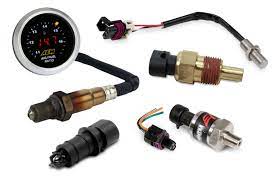
If one of these sensors is bad then the ECM is not getting accurate information and it may cause the engine to be run incorrectly. These missteps by the ECM can cause performance issues and potentially damage.
There are several sensors that might be at fault such as O2, MAF and coolant temperature sensors. The only way to know for sure which sensor is causing the check engine light to blink is to use an OBD2 scanner tool. This allows you to read the error codes stored.
Low Compression
Aside from fuel, air and a spark there is one other element that is needed in the engine to create the explosions within the cylinder. This is compression, essentially the fuel/air mixture must be compressed correctly so that the explosion in the cylinder has the right effect.
If you have a compression issue in your engine this can make the car jerk, lose power and also lack acceleration. This lack of compression can be due to issues with the pistons, piston rings or a faulty head gasket.
There are other issues that can affect the compression including the timing belt or chain but all have the same effect. The pressure in the engine is not correct so the fuel/air mixture does not compress and the cylinder will misfire. This can be damaging to the engine over time and make the vehicle hard to drive.
Can You Drive With a Blinking Check Engine Light?
You often can still drive when the blinking check engine light comes on but in some modern cars an issue like this might actually shut your vehicle off to protect the engine. This is a case of just because you can doesn't mean you should.
Depending on the issue you may not want to risk driving any further with this warning light flashing. To do so may cause serious and expensive damage to your car. Trying to save money could cost you far more in the long run so do not ignore this flashing check engine light, it means the issue is serious.
How Do You Fix a Blinking Check Engine Light?
As mentioned there are fewer causes for a blinking check engine light than a solidly lit one. This does not mean there are not still a number of potential causes. In this section we will help you find out the best ways to diagnose and repair the issue causing the blinking check engine light.
Check the Trouble Codes
We have already mentioned the OBD2 scanner tool and this really is an invaluable bit of at home diagnostic tech. You can purchase one of these inexpensively but the more you spend the better unit you will get.
Using the scanner tool you can connect to the vehicle's ECM and read the codes stored in its memory. This will tell you what code triggered the blinking check engine light. You will want to check the codes stored against the list of fault codes in your owner's manual.
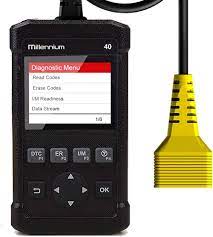
Different models may use some of the same codes but they will also have some unique ones so try and get a list of codes for your specific model of car. Once you know from the codes what is wrong you can set a plan for getting the issue fixed.
Check Your Spark Plugs and Ignition Coils
If you do not have a scanner an easy diagnostic test to attempt is to check your spark plugs. Sometimes spark plugs can get dirty, oily or damaged and as a result they will cause misfires in the engine. The spark plugs supply the spark for the combustion of fuel and air so if they fail to spark then the mixture will not ignite.
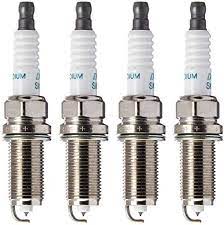
You may have to clean or replace your spark plugs. If the issue appears to be the ignition coils you may need to replace these as well.
Check Fuel Pressure
If you happen to have the tools and skills you can check your own fuel pressure and compare it to the manufacturer's specs for your vehicle. If the pressure is low then the issue exists in your fuel system so this will narrow down the issue.
Is It a Sensor?
The error codes should tell you if the issue is a sensor. Some of these sensors are easy to access and may only need cleaning or refitting. You may also need to replace the sensor which again may be easy or difficult depending on the problem.
Some sensors are deep in the engine so most people may not have the skills to access and replace them. Always know your limitations. It's better to get professional help than wreck your car by doing the wrong thing.
How Much Will It Cost to Fix the Problem?
It is impossible to give a concrete number on this as the issue may cost as little as $50 or up to thousands. It really depends on the type of vehicle you have and exactly what the issue or issues are.
You may get away with a cheap and easy fix or you could end up with a hefty bill. The more you can do to diagnose the issue yourself the better chance you have of finding a reasonably priced solution. Remember, do not attempt repairs that you do not feel capable of and always shop around for quotes from reputable mechanics.
Conclusion
The check engine light, when it's solidly on, is worrying but if it starts to flash then things just get a lot worse. This warning light only flashes when the problem is a serious one and one that could cause more damage to your car if ignored.
Link To or Reference This Page
We spend a lot of time collecting, cleaning, merging, and formatting the data that is shown on the site to be as useful to you as possible.
If you found the data or information on this page useful in your research, please use the tool below to properly cite or reference Tow Ratings as the source. We appreciate your support!
-
<a href="http://towratings.net/blog/what-does-a-blinking-check-engine-light-mean-and-how-do-you-fix-it/">What Does a Blinking Check Engine Light Mean and How Do You Fix It?</a>
-
"What Does a Blinking Check Engine Light Mean and How Do You Fix It?". Tow Ratings. Accessed on April 20, 2024. http://towratings.net/blog/what-does-a-blinking-check-engine-light-mean-and-how-do-you-fix-it/.
-
"What Does a Blinking Check Engine Light Mean and How Do You Fix It?". Tow Ratings, http://towratings.net/blog/what-does-a-blinking-check-engine-light-mean-and-how-do-you-fix-it/. Accessed 20 April, 2024
-
What Does a Blinking Check Engine Light Mean and How Do You Fix It?. Tow Ratings. Retrieved from http://towratings.net/blog/what-does-a-blinking-check-engine-light-mean-and-how-do-you-fix-it/.